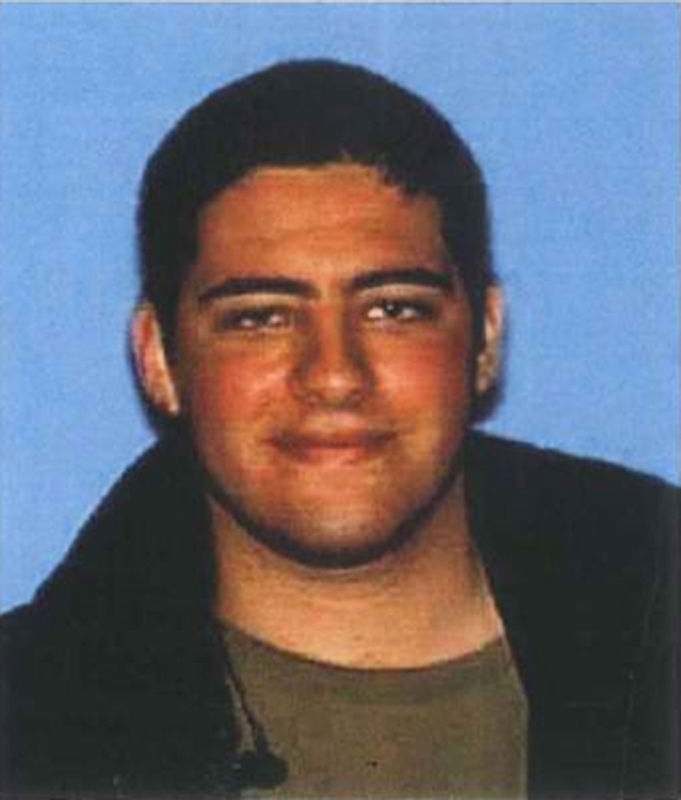SAN FRANCISCO — It was John Zawahri’s failure to pass a background check that prevented him from buying a firearm in California several years ago.
So the 23-year-old obtained an “unfinished receiver,” the metal piece that holds the critical mechanisms that allow guns to fire, and built an assault rifle himself. Last summer, he went on a rampage at a college in Southern California, firing about 100 rounds and killing five people before police fatally shot him.
Zawahri’s assault became one of the most notorious cases involving unfinished receivers, which are unregulated and have become readily available for purchase online and at some gun stores. Officials from the Bureau of Alcohol, Tobacco, Firearms and Explosives view the spread of the receivers as an effort to get around strict gun-control laws, particularly in California. They also acknowledge that they have no idea how many of the components have been made and sold.
“That is the million-dollar question,” said Joseph Riehl, the special agent in charge of the ATF’s San Francisco office. “We know for sure there are tens of thousands, just in California.”
NO IDENTIFYING MARKS
The sale of unfinished receivers, also called “blanks” or “80 percent lower receivers,” is one of the most daunting challenges for law enforcement officials tasked with enforcing firearms regulations. There are no sales records produced for unfinished receivers, as there are for ordinary gun sales, which means the ATF cannot check with stores for information about buyers when a gun is used in a crime. And because the receivers bear no serial numbers or other markings that would indicate where they were manufactured, guns made with them can’t be traced back to their owners if they are found at a crime scene.
California authorities struggled to figure out how Zawahri had obtained his AR-15-style semiautomatic assault rifle.
Unfinished receivers generally are formed pieces of metal, available for purchase for $60 to $250. They’re legal, but there is no real use for them other than as the lower part of a firearm.
Converting them into firearms is relatively simple: Use a drill press to create holes in the receivers, well out certain areas and then combine the pieces with other parts to make a fully functioning semiautomatic rifle. The process can take one to seven hours, depending on skill level.
ATF officials say gun enthusiasts are effectively exploiting a loophole in the law designed to regulate firearms. Under the Gun Control Act of 1968, it is illegal for an unlicensed person to make a firearm for sale or distribution. Vendors, however, say that because the receivers are not finished, they are not firearms and therefore are legal to sell and distribute.
“It is absolutely the right of every American to defend themselves and to keep and bear arms,” said Dimitri Karras, who sells unfinished receivers over the Internet and at his store in Oceanside, Calif. “This is a channel for them to do that.”
Karras, a Marine who was stationed at nearby Camp Pendleton, opened his store after serving in Iraq and Afghanistan. He sells combat packs, slings, tactical belts and carriers for wearing armor. He is not licensed to sell firearms and points out that no guns in his store are for sale – only the parts to make them, an experience with edgy appeal that he says is “very cool” and represents the difference between buying a house or building your own.
But Karras acknowledged that there is something else that attracts customers: They don’t have to submit to a background check and their gun won’t have a serial number that could be traced.
“In the current day and age we live in, the NSA receives files on almost everyone in our country,” Karras said. “This is a way for people to maintain their privacy.”
Law enforcement officials say their inability to trace the firearms is becoming a major problem. Firearms built with unfinished receivers are increasingly being found at crime scenes and being purchased from suspected gang members by undercover ATF agents.
Local police, officials say, often don’t contact the ATF about the guns because they know they can’t be traced, which makes estimating how many are out there that much more complicated.
The ATF is trying to crack down on the trade in the makeshift guns by targeting shops and individuals who offer to turn the unfinished receivers into functional pieces for firearms.
In February, undercover agents in California bought seven AR-15-style firearms from two brothers who allegedly offered to finish receivers and assemble them into guns. The brothers, Luis Cortez-Garcia and Emiliano Cortez-Garcia, have been charged with operating illegal shops in Sacramento and Fresno and making and selling pistols and rifles. The brothers did not have a license to sell firearms, didn’t conduct background checks and didn’t require customers to fill out paperwork required by federal regulations, according to court documents.
“The unregistered, untraceable firearms created and sold by these defendants included multiple AR-15-style assault rifles, similar to the guns used in shootings in Newtown, Connecticut, and Aurora, Colorado,” said U.S. Attorney Benjamin Wagner of the Eastern District of California, who said in an interview that he expects to charge more people involved in the alleged scheme.
‘BUILDING PARTIES’
Law enforcement officials said there’s reason for concern beyond the sale of the receivers over the Internet or in stores. Gun enthusiasts have started gathering for “building parties” to work together to add firearms components to their unfinished receivers. Sometimes they are joined by a skilled machinist who can do high-end milling on the receivers and convert them quickly.
On the website for his store, Ares Armor, Karras once advertised such events: “No Serial Numbers, No Registration, No Big Brother . . . We Host Build Parties.”
He said he doesn’t have the parties anymore but added that his goal is to get as many of the unfinished receivers on the streets as he can. He predicts that he’ll sell about 75,000 this year, mostly from his website, and that there are already hundreds of thousands of unfinished receivers nationwide.
“An armed society is a civil society, and it is my belief that the better armed our society is, the more civil it will be,” Karras said. “Most government agencies get upset when people find a way to maintain their privacy. This is a way for people to maintain their privacy.”
Send questions/comments to the editors.




Success. Please wait for the page to reload. If the page does not reload within 5 seconds, please refresh the page.
Enter your email and password to access comments.
Hi, to comment on stories you must . This profile is in addition to your subscription and website login.
Already have a commenting profile? .
Invalid username/password.
Please check your email to confirm and complete your registration.
Only subscribers are eligible to post comments. Please subscribe or login first for digital access. Here’s why.
Use the form below to reset your password. When you've submitted your account email, we will send an email with a reset code.